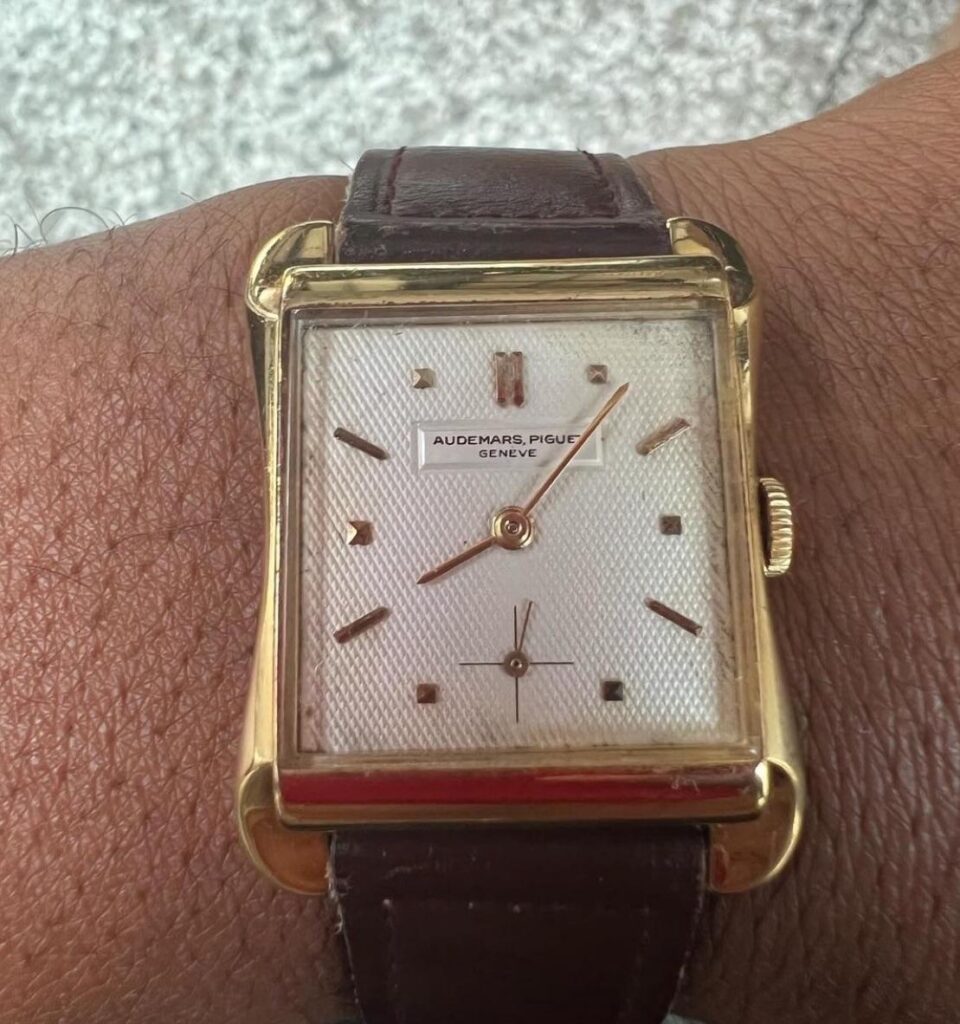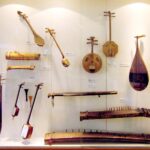Timekeepers of Nostalgia: Exploring Vintage Advertising Clocks
In a world increasingly dominated by digital screens and instant notifications, the charm of vintage advertising clocks stands as a poignant reminder of simpler times. These timepieces, embedded with the logos and designs of bygone brands, not only served the practical purpose of keeping time but also acted as cultural artifacts that captured the spirit of their eras. Harbingers of creativity from decades past, these clocks evoke nostalgia, rekindling memories of family gatherings, small-town diners, and the excitement of product launches that once left lasting impressions on consumers. As we delve into the realm of vintage advertising clocks, we unveil the intricate stories behind these time-honored collectibles, exploring their aesthetic appeal, historical significance, and the enduring legacy they create in the hearts of collectors and enthusiasts alike. Join us on this timeless journey, where each tick of the clock brings forth the echoes of a rich advertising history.
Exploring the Allure of Vintage Advertising Clocks
The charm of vintage advertising clocks lies not only in their ability to tell time but also in the captivating stories they whisper from a bygone era. Each clock serves as a window into the marketing strategies and design sensibilities of its time, often showcasing brands that have become iconic. The intricate details, vibrant colors, and playful motifs make these timepieces more than mere functional items; they are dynamic pieces of art. Collectors and enthusiasts are drawn to their history, celebrating distinctive designs that remind us of the creativity and innovation of the past.
Moreover, the nostalgia associated with vintage advertising clocks rekindles memories and evokes emotions tied to specific products and brands. They often feature:Vintage Crocodile Handbags
- Brand Loyalty: Many individuals find joy in reconnecting with brands that defined parts of their youth.
- Unique Designs: Each clock is a unique representation of the style and advertising trends of its time.
- Investment Value: As they age, many of these clocks appreciate in sentimental and monetary value, making them coveted collector’s items.
Below is a brief comparison of popular brands that produced notable advertising clocks:
| Brand | Era | Notable Features |
|---|---|---|
| Budweiser | 1930s-1980s | Iconic logo and vibrant colors |
| Coca-Cola | 1940s-1960s | Classic bottle imagery and retro typography |
| Pepsi | 1950s | Bold graphics and playful designs |
Unveiling the History Behind Iconic Timepieces
Vintage advertising clocks serve as a captivating glimpse into the past, merging functionality with artistic flair. Many of these timepieces not only tell time but also share stories of the brands they represent. Originating in the early 20th century, they became a pivotal part of marketing strategies, allowing companies to display their products in an engaging manner. Often embellished with colorful graphics and whimsical designs, these clocks were more than mere tools; they were vibrant pieces of art that captured the imagination of consumers. Their appeal lies not just in their utility but in the nostalgia they evoke.
Among the most iconic designs, certain styles stand out for their innovative concepts and cultural significance. Some key characteristics include:
- Neon Lights: Many clocks feature bright neon colors, which made them visually striking and perfect for attracting attention in retail settings.
- Brand Representation: Each clock typically showcases a brand logo or product, solidifying brand identity and loyalty.
- Unique Shapes: From classic round faces to unusual silhouettes, these timepieces often broke conventional designs, becoming conversation starters.
| Clock Brand | Year Introduced | Notable Feature |
|---|---|---|
| Chevrolet | 1950s | Distinctive chrome finish |
| Coca-Cola | 1940s | Iconic red and white color scheme |
| Mobil Gas | 1930s | Art Deco influence |
Identifying Key Features That Enhance Collectibility
When it comes to vintage advertising clocks, several distinctive features set certain pieces apart, enhancing their appeal to collectors. Brand Recognition is crucial; clocks branded with popular or now-defunct products often fetch higher prices. Collectors are particularly drawn to unique designs that embody the era’s marketing trends. Additionally, Material Composition plays a vital role. Clocks made from metals, high-quality plastics, or intricate glass may be more desirable than their counterparts defined by cheaper materials. Limited Editions or models produced in smaller quantities often enable collectors to feel a sense of exclusivity, amplifying their interest.
The condition of the clock is also a decisive factor in its collectibility. A clock that has retained its original paint and features, free from chips or rust, typically commands higher interest. Mechanics should not be overlooked, as operational pieces are often more sought after, especially if they have been lovingly restored. Further, a captivating Brand Story or historical significance adds layers to its value; a clock associated with a significant event or a beloved brand can resonate deeply with collectors. In essence, the combination of aesthetic appeal, historical context, and functional design elevates these vintage clocks from mere timekeepers to coveted collectibles.
Restoration and Preservation Tips for Vintage Finds
When it comes to maintaining the charm of vintage advertising clocks, it’s essential to strike a balance between restoration and preservation. Start by gently cleaning the clock case with a soft, lint-free cloth to remove dust and grime. For stubborn stains, a mixture of mild soap and water can work wonders; just be cautious around any decorative elements. Additionally, avoid using harsh chemicals or abrasive cleaners, as these can damage the delicate finishes. Consider using furniture polish or a wood conditioner specifically designed for vintage pieces to enhance the wood’s natural luster. Regular dusting and periodic cleaning can keep your clock looking pristine while preventing long-term damage.
For the clock mechanism, it’s important to keep things ticking smoothly. If your vintage clock has become silent, a bit of oil on the movement can sometimes bring it back to life. Use only clock oil or synthetic lubricants to prevent wear and tear. Check the following components for optimal functioning:
| Component | Maintenance Tip |
|---|---|
| Hands | Ensure they are not touching the glass or each other. |
| Battery | Replace with standard or recommended batteries to avoid leakage. |
| Dial | Clean gently with a soft brush to avoid scratches. |
With these practices, you can help ensure your vintage advertising clocks not only tell time but also continue to tell a story for years to come.
Showcasing Your Collection: Display Ideas and Inspirations
Displaying your vintage advertising clocks can transform any space into a captivating homage to nostalgia. Consider creating a dedicated gallery wall that highlights the unique designs and colors of each clock. Arrange the clocks in a cohesive layout, possibly cascading them in a playful pattern, or aligning them in rows to create a more structured appearance. Use simple floating shelves or deep-set frames to give depth without overcrowding the visual space. Surround the clocks with complementary decorative elements such as vintage signs, classic photographs, or even newspaper clippings from the era, which can serve as a conversation starter.
Another approach is to incorporate your collection into functional spaces. Incorporate clocks into your kitchen décor by placing smaller timepieces on windowsills or hanging them above countertop areas where timekeeping is essential. For living rooms or home offices, consider crafting a curated mantel display or a stylish console arrangement. To enhance the aesthetic, you could use a clean, minimalist pedestal table that allows the artwork of the clocks to take center stage. Don’t forget about proper lighting—a well-placed spotlight or soft ambient light can elevate the visual impact, casting enchanting shadows and highlighting the intricate details of your vintage pieces.
The Future of Vintage Advertising Clocks in Modern Design
The resurgence of vintage advertising clocks in modern design reflects a unique blend of nostalgia and contemporary aesthetics. These timepieces, once considered relics of a bygone era, have found new life in various decor styles, appealing to both collectors and those looking to add a touch of character to their spaces. Incorporating these clocks into home and office environments is not just about utility; it’s also an artistic statement. The vibrant colors, whimsical graphics, and distinctive typography can complement modern design without overwhelming it, creating a harmonious contrast that draws the eye. As minimalism continues to dominate design trends, these vintage pieces serve as bold focal points, exuding charm and evoking stories of the past.
Incorporating these vintage clocks into modern interiors opens up a world of design possibilities. Here are some ways they can enhance contemporary spaces:
- Eclectic Decor: Mix and match vintage clocks with modern furniture for an eclectic, curated look.
- Statement Pieces: Use larger clocks as statement pieces over mantels or in entryways.
- Color Pop: Select clocks that feature vibrant colors to inject personality into neutral spaces.
| Style | Effect |
|---|---|
| Industrial | Contrast with raw materials for a modern fusion. |
| Scandinavian | Complimentary warmth to clean lines. |
| Bohemian | Add texture and playful character. |
Q&A
Q&A: Unveiling the Charm of Vintage Advertising Clocks
Q1: What exactly are vintage advertising clocks?
A1: Vintage advertising clocks are timepieces from a bygone era that not only tell time but also serve as promotional items for various businesses. Typically adorned with brand logos, slogans, and images, these clocks were often used in retail settings to entice customers and elevate brand visibility.
Q2: How do you identify a vintage advertising clock?
A2: Identification generally hinges on several factors: the brand printed on the clock, its style and materials, and its overall age. Most vintage advertising clocks date from the early to mid-20th century and feature distinctive designs. Look for unique characteristics like tin faceplates, neon lights, or hand-painted details that set them apart from contemporary models.
Q3: What makes vintage advertising clocks collectible?
A3: Collectors are drawn to the combination of nostalgia, historical significance, and artistic design that vintage advertising clocks embody. Each piece tells a story about the brand it represents and the era it hails from. The rarity of certain models—particularly those related to iconic brands—also plays a significant role in their desirability.
Q4: Are there any particular brands or themes that are more popular among collectors?
A4: Yes! Certain brands have achieved iconic status in the world of vintage advertising clocks. Examples include Coca-Cola, Mobil Oil, and various breweries. Clocks showcasing mid-century modern design or whimsical themes often capture collectors’ attention due to their aesthetic appeal and cultural significance.
Q5: How should one care for and maintain a vintage advertising clock?
A5: Preserving the integrity of a vintage clock requires gentle handling and appropriate storage. Keep the clock out of direct sunlight to prevent fading and place it in a stable environment where humidity levels are controlled. When dusting, use a soft, dry cloth; avoid commercial cleaning products, as they might damage the clock’s surface or finish.
Q6: Where can someone find vintage advertising clocks?
A6: Vintage advertising clocks can be discovered in various places such as antique shops, flea markets, estate sales, and online auction sites. Joining collector clubs and attending vintage expos can also provide opportunities to find unique pieces while connecting with fellow enthusiasts.
Q7: What should buyers keep in mind when purchasing these clocks?
A7: Buyers should consider the clock’s condition, authenticity, and provenance before making a purchase. Inspect for any damage or repairs, and if possible, obtain documentation that verifies its age and origin. Additionally, understanding market values can help you make an informed investment.
Q8: Can vintage advertising clocks still be used as functional timepieces?
A8: Many vintage advertising clocks can still be functional, provided they have been well-maintained and serviced. However, it’s important to remember that some collectors prefer to keep these clocks in original condition for display rather than regular use. Ultimately, the decision will depend on the collector’s intentions and appreciation for the clock’s historical value.
Q9: What are some trends in the vintage advertising clock market today?
A9: The vintage advertising clock market is experiencing a revival, with younger collectors showing increased interest in retro decor. Themes reflecting current pop culture and nostalgia—which often evoke fond memories of simpler times—are becoming particularly popular. As vintage aesthetics gain traction in modern design, advertising clocks are finding their place in contemporary interiors.
Q10: How do vintage advertising clocks contribute to our understanding of history?
A10: Vintage advertising clocks offer a unique lens through which we can analyze past consumer behavior, marketing strategies, and cultural trends. They encapsulate the values and aspirations of their time, providing insights into how businesses once communicated with their audience. In that sense, they are not merely functional objects, but rather artifacts that help us understand the evolution of commerce and society.
In Summary
As we turn the hands of time back to explore the captivating world of vintage advertising clocks, we uncover the intersection of craftsmanship, commerce, and nostalgia. Each piece tells a story that transcends mere timekeeping; it reflects eras of consumer culture, artistic innovation, and the fleeting nature of trends. Whether displayed proudly in a collector’s showcase or serving as a charming conversation starter in a living room, these clocks are more than just relics—they are a glimpse into our shared history.
In a world dominated by digital devices, the elegance of these timepieces reminds us of the beauty found in authenticity and craftsmanship. With every tick and tock, they invite us to appreciate the artistry of days gone by while simultaneously urging us to cherish the moments that the present holds. So, as you seek to add a touch of vintage allure to your own space, consider the timeless charm of an advertising clock—it might just hold the power to transport you to another time, one hour at a time.


